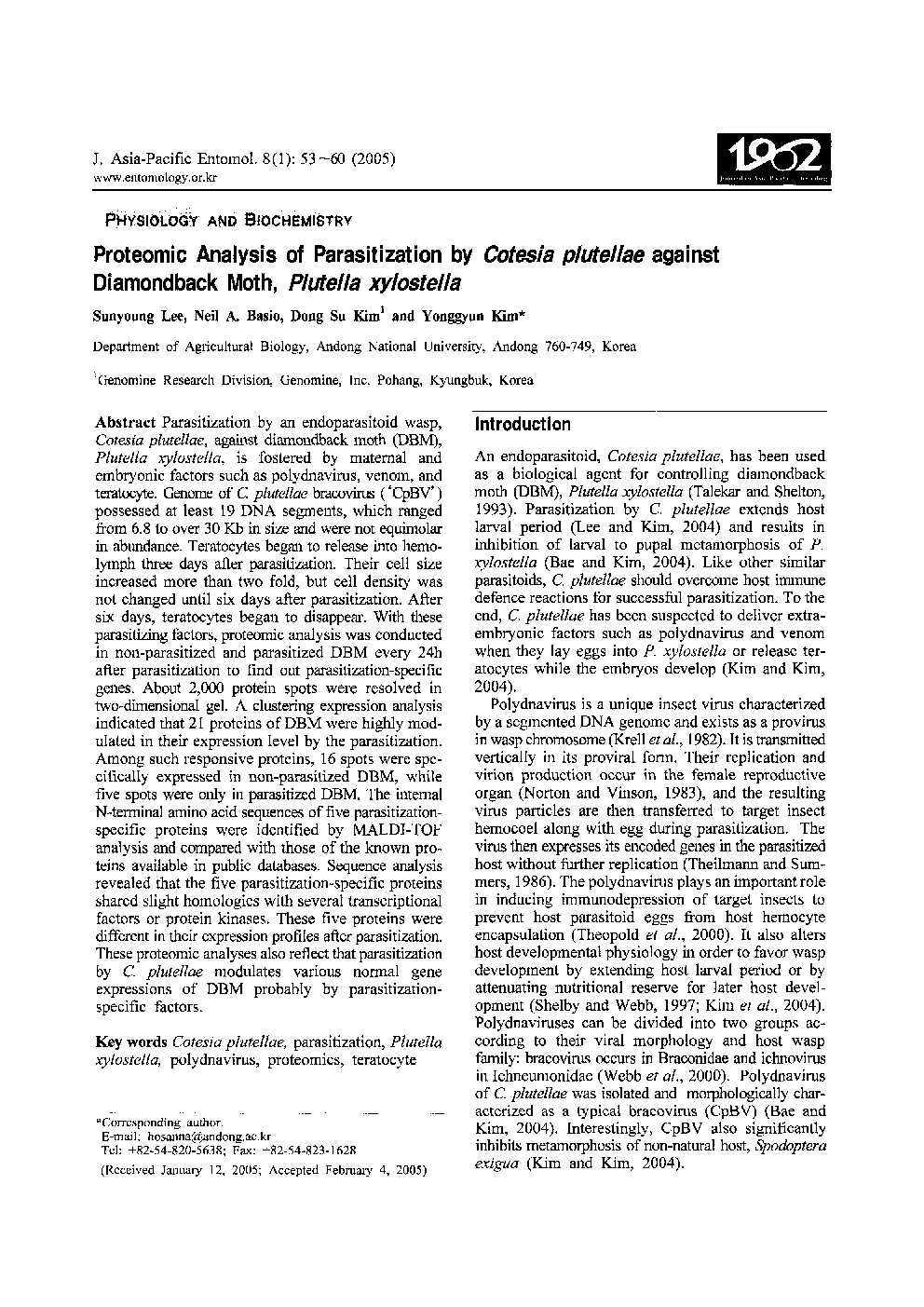| Article ID | Journal | Published Year | Pages | File Type |
|---|---|---|---|---|
| 9476758 | Journal of Asia-Pacific Entomology | 2005 | 8 Pages |
Abstract
Parasitization by an endoparasitoid wasp, Cotesia plutellae, against diamondback moth (DBM), Plutella xylostella, is fostered by maternal and embryonic factors such as polydnavirus, venom, and teratocyte. Genome of C. plutellae bracovirus ('CpBV') possessed at least 19 DNA segments, which ranged from 6.8 to over 30 Kb in size and were not equimolar in abundance. Teratocytes began to release into hemolymph three days after parasitization. Their cell size increased more than two fold, but cell density was not changed until six days after parasitization. After six days, teratocytes began to disappear. With these parasitizing factors, proteomic analysis was conducted in non-parasitized and parasitized DBM every 24h after parasitization to find out parasitization-specific genes. About 2, 000 protein spots were resolved in two-dimensional gel. A clustering expression analysis indicated that 21 proteins of DBM were highly modulated in their expression level by the parasitization. Among such responsive proteins, 16 spots were specifically expressed in non-parasitized DBM, while five spots were only in parasitized DBM. The internal N-terminal amino acid sequences of five parasitization-specific proteins were identified by MALDI-TOF analysis and compared with those of the known proteins available in public databases. Sequence analysis revealed that the five parasitization-specific proteins shared slight homologies with several transcriptional factors or protein kinases. These five proteins were different in their expression profiles after parasitization. These proteomic analyses also reflect that parasitization by C. plutellae modulates various normal gene expressions of DBM probably by parasitization-specific factors.
Related Topics
Life Sciences
Agricultural and Biological Sciences
Animal Science and Zoology
Authors
Sunyoung Lee, Neil A. Basio, Dong Su Kim, Yonggyun Kim,
